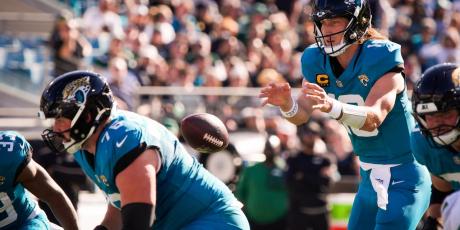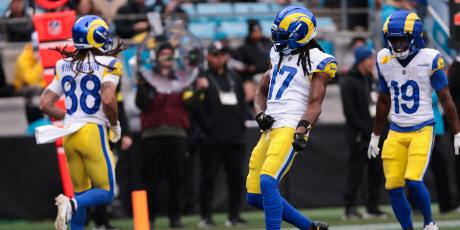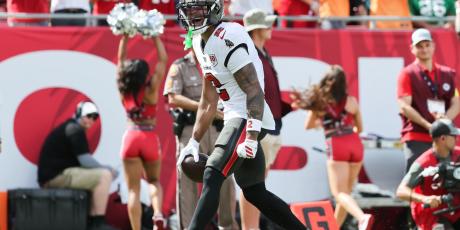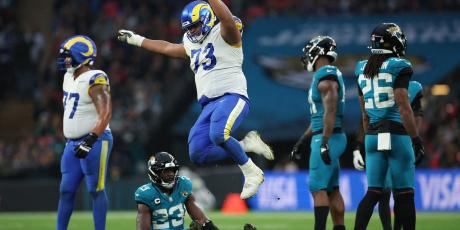NFL Combine Review and Comparisons: Tight Ends

In the second installment of this short series, I'll be examining the combine results of the incoming rookie tight ends using a Principal Component Analysis along with some clustering. The first part covers the methodology of the analysis that I did, followed by a couple of player-specific notes on some tight ends that showed out on Thursday night.
More Combine Analysis by Position: WR | RB
Methodology
Before I get into the analysis, I want to explain the methodology and techniques that I used along with delineating what this analysis is and, more importantly, what it is not. Let's start off with the latter.
This analysis is a descriptive way to compare a player's 2022 combine results to historical results. This is not a predictive indicator of future NFL and fantasy success or that a player with a similar combine result will have the same career.
In terms of the methodology, I used a Principal Component Analysis (PCA) using data from the NFL combine since 2000 (keep in mind that there was no combine in 2021), courtesy of Pro Football Reference. If you're unfamiliar with PCA, it is a way to "squish" several variables (in this case, each of our combine metrics), into just a couple variables - our principal components - thus simplifying our dataset and reducing noise. Put another way, PCA helps us find fewer features that will represent our data in a more compressed way.
This also allows me to visualize the results on two axes using the first two principal components, which I wouldn't be able to do easily with the several combine metrics that we have. This is also is where we'll be able to see player comparisons - players that appear further away from the center of the chart are more unique in their results and fall into a more distinct category.
For tight ends, below are the weights for the combine metrics for each of the two principal components. To calculate a player's principal component, you can read these as linear equations. So for principal component one, a player's score is calculated as (0.20 * Bench Press) + (0.53*Broad Jump) + (-0.53*Forty) + (-0.12*Height) + (0.52*Vertical) + (-0.29*Weight).

Player Results
While there were several dozen players who participated in the NFL combine, I'm only going to highlight a couple of players whose performances stood out. You'll see a chart below that shows each of the incoming rookies plotted based on their principal component combine scores.
You'll also notice the different colors used to indicate different clusters of wide receivers based on their combine scores. I did this using a technique called K-Means clustering, and appropriately named the groups based on the features of the wide receivers in each group and their relative combine scores. This is not intended to be a one-size-fits-all grouping for players, but should give you an idea of the types of other receivers that have historically appeared in these groups.

Now, onto the player evaluations!
Grant Calcaterra, SMU
Grant Calcaterra was one of the first tight ends to run the 40-yard dash yesterday and immediately set the tone with a 4.62-second time, an astounding number given his 6'4", 241-pound stature. This ended up being the third-fastest run among tight ends on the day. Calcaterra also posted the second-best broad jump (122 inches) and fourth-most bench presses (20) of the tight end group.
Calcaterra stepped away from football following the 2019 season due to his history with concussions but transferred to SMU prior to last season to rejoin the game. Once seen as a potential top 100 pick, Calcaterra finds himself just at the end of a couple of mock drafts. Calcaterra may have his work cut out for him to make a game-day roster, but this performance should put him back on teams' radars.
Similar Combine Scores: Lance Kendricks, Ladarius Green
Chigoziem Okonkwo, Maryland
The title for fastest 40 time from a tight end went to Chigoziem Okonkwo yesterday as he posted a 4.52, the only one to clear 4.6 seconds. Okonkwo also displayed his potential explosiveness with a 34.5-inch vertical and 120-inch broad jump, which are in the 70th and 82nd percentile among tight ends, respectively.
According to Next Gen Stats, Okonkwo had the highest athleticism score for tight ends, which is good to see given he has a somewhat smaller build at 6'2" and 238 pounds. Similar to Calcaterra, Okonkwo was in fringe-draft territory as a likely day-three player, but the speed he showed could push him up draft boards.
Similar Combine Scores: Evan Engram, MyCole Pruitt
Curtis Hodges, Arizona State
Curtis Hodges is a big, big dude. He stands at 6'8", 257 pounds, so I'm not taking much stock in him having the second-slowest 40 time of the tight end group. Hodges made up for it, though, with his vertical and broad jump numbers, both of which were in the 70th percentile.
Hodges broke out in his senior season, with 20 receptions for 373 yards and a 23% dominator rating, playing in only eight games. Ultimately these may not be enough to move the needle in what is already a deep tight end class.
Similar Combine Scores: Luke Stocker, Kendall Blanton





















